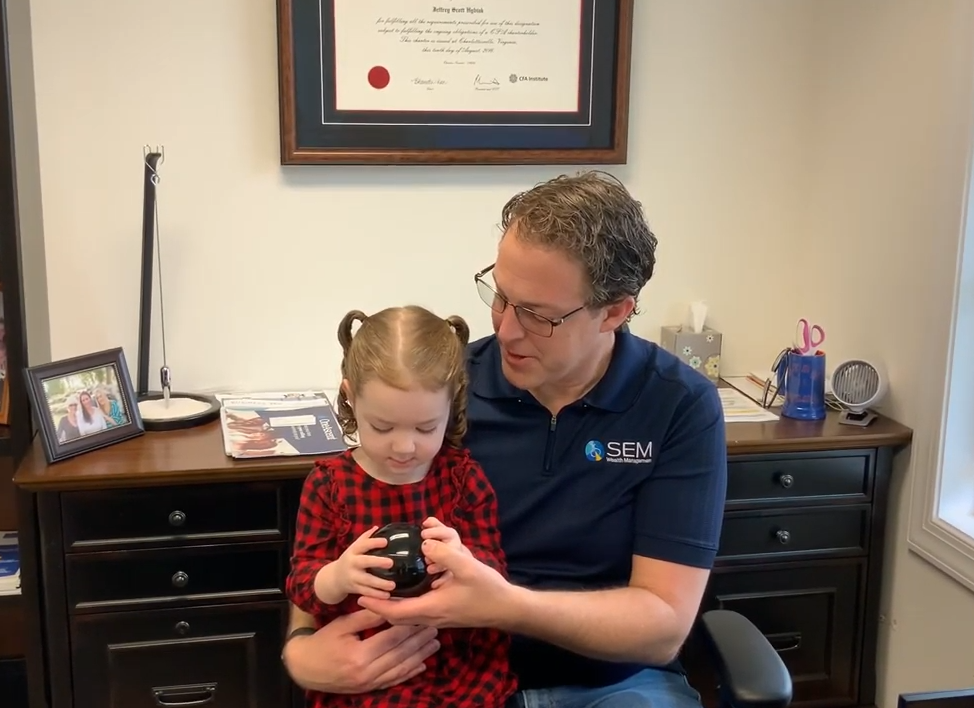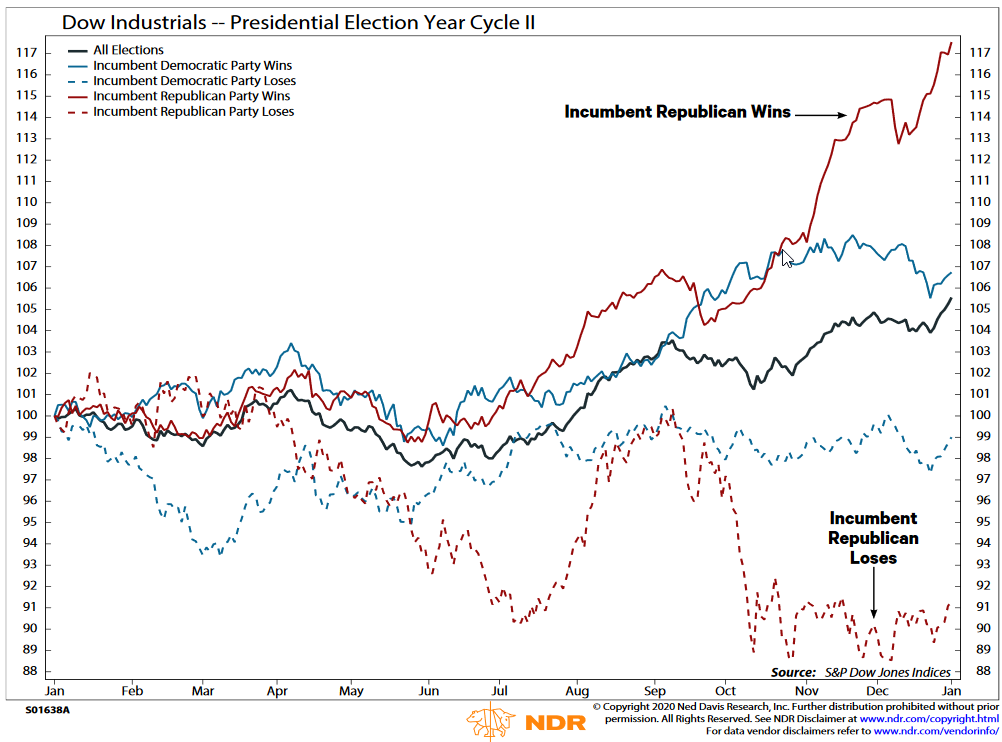Summer officially began over the weekend, meaning we spent the entire spring season in the midst of the Coronavirus pandemic. I don't know about you, but I'm drained. I'm tired of hearing confident predictions of the outcome when nobody has any idea how this is going to play out. We've never given market predictions at SEM because we've seen how poorly the highest compensated investment firms continuously give outlooks that miss the mark. Often by a wide margin. Yet they somehow keep their assets under management and continue confidently telling investors what comes next for the market. We discussed the difference in the Wall Street strategy and SEM's Behavioral Approach here:

I just couldn't make myself go through my normal weekend reading. Every article I started to read my brain said, "but how do you know?" I instead took a step back and read a good chunk of a couple of books that have been on my list (more on that below). But first, here's what I see as the most important things to focus on this week and the weeks ahead.
Election is going to matter soon
Depending on your political slant, it was either a "terrible weekend" or an "exciting" weekend. I'm a registered independent, so I can see both sides. My independent take is the President is in trouble. Whether it can be blamed on the virus, the "liberal" media, black lives matter, or something else, I was surprised at the lack of attendance at his rally in Tulsa on Saturday. Add to that yet another controversial firing of somebody who was investigating somebody close to the President to the inability to stop the release of John Bolton's tell-all book this Tuesday. When you include the DACA and LGBTQ Supreme Court rulings that caused the President to tweet, "you get the feeling the Supreme Court doesn't like me?" the liberals have plenty to celebrate.
On the other side, the far right supporters of President Trump are excited because they feel all of the above will ignite his base and turn the downtrend in the polling numbers. He's a brilliant campaigner and many people see him starting his campaign events as a sign of a "strong" president. The more he's out there, the more people will turn their attention to the election.
I've always told our advisors and clients the most important rule of investing:
"Do not let your political beliefs influence your investment decisions."
This applies to both parties. The data actually shows Democrats having better stock market performance, which goes against what most of us would think would be the case since Republicans are seen to be more pro-business than Democrats. There are so many variables involved, along with good and bad luck of what part of the economic cycle they are elected in, that you cannot with confidence say one side or the other is better for the stock market/economy. Recessions at the end of both Bush presidencies skewed the Republican performance lower. President Obama and Clinton taking the reigns at the bottom of a recession, skewed their results higher.
This does not mean the election cannot hurt the stock market over the short-term. During their mid-year outlook last week, Ned Davis Research had this chart showing how the market moves during an election year based on the outcome. As you can see, if Trump wins it could be off to the races. If Trump loses, we could see a big sell-off.

If the President is campaigning and his poll numbers do not begin catching-up, we could see a pretty big sell-off based on the data. Remember, this is a short-term look, not a long-term prediction on how President Biden would perform.
It's the Economy, Stupid
We continue to watch our economic model closely. This served us and our advisors well during the last recession and recovery. It can be used to set expectations and to plan retirement plan rollovers. If the economy is still struggling and stocks are pricing in a strong recovery, it is probably a good time to get those rollovers going. We are essentially fully invested in nearly all of our models, which means they are not giving up much upside participation, but have the benefit of applying active management as we move through whatever the recession/recovery looks like.
Most indicators should show a move higher. The importance is how much of the loss each makes up and how long it takes. Here's the updated table:

Last week Building Permit numbers were released. We saw a "strong" jump in permits but not enough to get too excited about. One thing I thought was interesting was the level of permits. I hadn't looked at this too much since our model uses the year-over-year percentage change.

You can clearly see the housing boom and bust. I keep hearing Millennials, who were delayed in household formation due to the last housing bust and the heavy student loan debt burden they carry, are just now starting to buy houses. In both Arizona and Virginia we've finally seen more affordable new starter home communities going up, which may make it easier for younger buyers to move into a new home. More employers willing to allow at least part-time work from home arrangements could accelerate the buying trend. This will be a longer-term trend worth watching.
Masks or No Masks
With an office in Arizona & Virginia along with friends and family in both states, I obviously watch news there more closely than other states. Last week Arizona's governor punted on requiring masks state wide (as Virginia does) and instead left it up to community leaders. Democratic mayors, including those in Phoenix, Tucson, and Mesa immediately ordered masks to be worn in their cities. Republican mayors vowed to not "infringe on citizens civil liberties." Most of Tucson's "suburbs" have Republican mayors so this was leading to confusion about when and where you'd have to wear masks. The Democrat-heavy County Commissions stepped in and ordered masks for the whole county.
I don't know how this became a political issue in some regions, but the anger and demands for recalls over this policy is real. As I joked on Facebook, going from wearing sweats and shorts to dress pants and jeans as you return to the office is certainly not comfortable, but I do it because it's the standard people expect. I also pointed out requiring us to wear clothes is more for the benefit of others than ourselves. Many in Tucson to not feel the same way.
We use science and data to make decisions. Virginia's governor was a pediatric neurosurgeon. He obviously prefers using science and data to make his decisions. I've never taken his handling of the shutdown and re-openings or his mask policy as a political statement. Most of our leaders are doing the best they can.
What is interesting is even a Fox News Poll shows the overwhelming majority of Americans are in favor of wearing masks. I don't know why the President is not getting behind this. If he came out and said, "we should all be wearing masks to kick this thing," it is no longer a political issue.

I posted this thought on Facebook over the weekend. If you want Trump to win, the science says you should be wearing masks to slow the spread. Slow the spread, get more re-openings. Get more re-openings, generate stronger economic growth. Get stronger economic growth, get more confidence in the President.
What I don’t understand with the whole anti-mask crowd is the gamble they are taking. If cases and deaths start going back up, the improvement in the economy goes away and a short recession probably turns into a depression as both consumers lose confidence and states shut back down. Trump takes the blame and loses. If you wear a mask and the spread slows (as it has in states with mask laws), more people go out with confidence, all states reopen, and the economy keeps growing. Trump gets the credit and wins.
I spent a lot of time going through the actual poll results. There are some fascinating questions and readings in there. Fox shows the trend in the results. Interestingly enough, the President's highest approval rating (49%) came the first week of April. This is the week after he endorsed wide-spread shutdowns and warned about a spike in deaths. He specifically said we should follow CDC guidance. As the weeks wore on and he started to undermine their guidance and brought back the "conspiracy" talk, his numbers have dwindled. His current approval rating (44%) is just slightly above the 41% of people who view Hillary Clinton favorably. For perspective, last week 50% of Americans thought favorably of Joe Biden.
Wherever you stand on masks, I'd encourage you to read (or re-read) this excellent article from Cody. It's very likely our brains are influencing how we look at the news. Understanding this may give you a better perspective.

Focus on the Fed
Last week, the Federal Reserve announced they were starting to buy individual issues of corporate bonds. They had announced this in March and followed that in mid-April with an announcement they would be able to buy certain "junk" bonds and the high yield bond ETFs. They had bought some of the investment grade bond ETF shares but hadn't had to act on the individual purchases. Ben Bernanke had a theory that "words matter," and Chairman Jerome Powell has said this multiple times as they fight the crisis. Apparently the talking up of the market had run its course and the Fed felt the need to buy some individual corporate bonds.
In the whole scheme of things, the Fed's balance sheet actually contracted last week. We shouldn't read much into it as a lot of it was based on maturing issues and a lighter Treasury auction last week. However, just as we did in the last post-crisis world, we'll continue to watch the construction of the Fed's balance sheet to get a feel for what is happening behind the scenes.

The two lines I focus on is the blue "Total" line and the purple "reserve balances". The purple line is how much banks have on reserve at the Fed. They are able to use this money to borrow against for their investment and banking operations. During the last expansion, every time the Fed slowed the expansion of their balance sheet or worse let it contract, we saw the stock market correct.
Is the Fed Really Helping?
Whenever the Fed cuts rates we hear from consumer experts on TV and on the internet that this helps consumers because it reduces the rates on credit cards and car loans. With consumer credit card delinquencies rising, apparently banks have not used the move back to zero to give consumers a break.
Credit card companies are not your friend.
— Sven Henrich (@NorthmanTrader) June 21, 2020
Highest interest rates in over 20 years despite rates on the floor. pic.twitter.com/6HpXydy1hN
One of the arguments in the "Occupy Wall Street" movement was the Fed's policies helped the big banks at the expense of the consumer. Seeing this chart certainly won't help squash that argument which is likely to come back to the forefront in the months ahead.
Another Forest Fire
Sadly, the mountains outside of our Tucson office are on fire again. This reminded me of the metaphor I first used in April 2007, which at the time became our most popular blog article. The point of the article was like the forest, our economy needs a "fire" to clear out the dead undergrowth. This allows for healthier long-term growth and reduces disease and other issues. Once again the Fed is preventing the "dead growth" from being wiped out by allowing companies who were going to fail during the next recession to stay alive. This may sound callous, but allowing those weaker companies to stay in business takes away capital from the companies who can provide much stronger economic growth. Allocating money to the stronger companies would create more jobs over the long-term.
The Fed has said they are not bailing out "insolvent" companies, but they are bailing out the banks who had significantly lowered their lending and ratings standards the last 10 years (thanks to the Fed's low interest rate policies to fight the last recession.)
At some point the fire will erupt that the Fed cannot stop.

Two Different Experiences
From talking to people across the country, your experience depends on where you live. The twins started soccer practice last week, which was welcome. The panic started the weekend before their first spring game. Whether or not they will get to start games soon is still up in the air. They have a tentative tournament scheduled for the end of July. High school sports in Virginia also started practices last week (with restrictions.) Meanwhile, in Arizona there is a high possibility they will have to cancel their fall sports seasons.
As we said from the outset, there is no handbook for how to handle this. We'll all have the benefit of hindsight to assess the situations. I'm not faulting how Arizona's governor handled this, but you could see from the beginning how different the states would handle the virus. I posted this on March 25.

I know many people question the data. It's an imperfect system to say the least. For me, I've been relying on John Hopkins, the Mayo Clinic, and CDC for sources and guidance. The way I look at it, if I had a major illness, I'd defer to their expertise, not some doctor I saw on YouTube that said this is a conspiracy. The media keeps focusing on the number of cases. I instead look at the percent of positive tests, as this normalizes against what should be more tests being given. This is also what the CDC and Mayo Clinic have said is important. If we have declining percentage of positive tests, there is less spread. More percent positives, the faster the spread. It's simple science and logic.
The chart for the US is now moving higher thanks to the increase in the early opening states such as Arizona (source).

Arizona has been essentially fully opened since May 15. It only took about 10-15 days for the spread to increase after their opening.

Virginia has instead gone through a phased opening. Phase 1, which was very limited was on May 15 (same day as Arizona.) Phase 2 was on June 5. We're hopeful Phase 3 will start in the next few weeks (which allows most full contact sports except football.) Masks have also been required state wide in Virginia. The spike the end of last week will be something our doctor/governor will be watching.

Again, there is no handbook. This isn't a political statement. I want the economy to be as close to fully opened as quickly as possible. To do that we need everyone to cooperate as much as they can. I wish we could make this not political, but I should know better based on the next point.
Social Cycle Rearing It's Ugly Head
While it doesn't enter into our investment models or client portfolio allocations, one of the biggest components of our Behavioral Approach is properly setting expectations. Because of this I've spent a great deal of time studying demographics, sociology, and our economic history. I am still trying to fully wrap my head around how to take thousands of pages of research and reducing it down to a seminar/webinar people would sit through. My first outline has 15 main topics.
I've woven the research into my articles, seminars, videos, etc over the years. The most recent was here:

Over the weekend I made it about 30% through George Friedman's Storm Before the Calm. What is interesting with Mr. Friedman's book is his research came from a different approach than Strauss & Howe's Social Cycle work, he also identified an approximately 80 year cycle (along with another 50 year cycle.) Both are colliding in the 2020s for the first time in history. I'll have much more on this in the coming weeks and months, but here's one of the quotes:

Obviously we can see these things playing out before our eyes. According to both his research and Strauss & Howe, it will get worse before it gets better. Spoiler Alert: Coming out of this we will be even stronger and set-up for decades of strong growth. We just need to get there. This is where our data driven process becomes so important. For more on that, check out this post from last week.

Social Justice Plays a Roll
Personally and as a firm, I believe we need to stand-up for those who have not enjoyed the same freedoms as many of us have. To get stronger growth, we need to make changes so more people have a chance to succeed. Mr. Friedman actually addresses this in his book.

I finished reading Just Mercy, the remarkable story of Bryan Stevenson. As you'd expect from me, I prefer to read books before watching the movies, so we watched the movie this weekend as a family. While most of us will not be able to make the same impact as Mr. Stevenson, even if we change the direction of one person we make the world a better place. Whether you watch the movie first or read the book, the book goes into much greater depth as to the problems our country needs to address. There are no easy answers and it will take years to make a visible change, but we can do better as a country.
If you feel the same way, one of the easiest things for you to do is utilize our Cornerstone Models. They are making a significant impact behind the scenes with our investments. It doesn't end there, but it is a great start. Last week we posted our Cornerstone Impact blog, which details what our fund partners are doing to change our country for the better.

Wherever you live and whatever your political beliefs, there is somebody out there who could use a little boost. I encourage you to find somebody this week and start making an impact.
If you'd like to be a part of our growing group of financial advisors looking to make a much bigger impact, hit me up on Facebook or LinkedIn (links in my profile below.)





